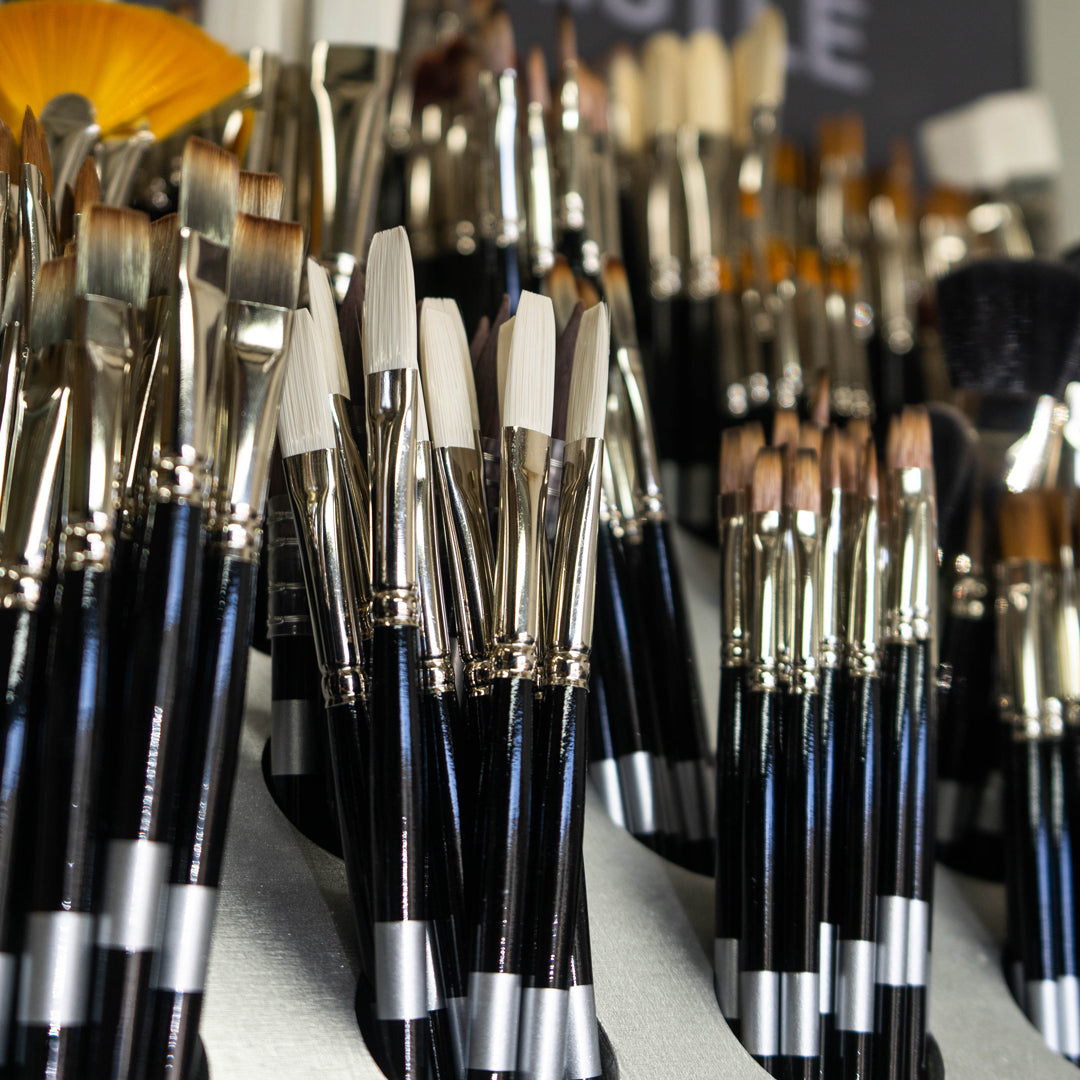For every artist, choosing the right brush can be the difference between a masterpiece and a missed opportunity. With a plethora of "artist brushes" available, understanding the intricacies of each type can be daunting. This guide delves into the world of "art brushes", helping you navigate the rich tapestry of shapes and fibers, ensuring every stroke is intentional and impactful.
Brush Shapes: Understanding The Basics
-
1. Round Brushes:
Versatile and adaptable, these are the go-to brushes for many artists. Their pointed tip and large belly allow for both fine lines and wide strokes.2. Flat Brushes:
Characterized by a flat, squared tip, these brushes are perfect for bold strokes, filling large areas, and even varnishing.3. Bright Brushes:
Resembling the flat brushes but with shorter bristles, bright brushes offer more control, making them perfect for thick, controlled strokes.4. Filbert Brushes:
Marrying the features of round and flat brushes, filberts are ideal for blending and offer soft rounded edges, making them a favorite for figurative work.5. Angle Brushes:
Their slanted or angled tip allows these brushes to excel in precise line work, filling tight corners, and crafting controlled curves.6. Fan Brushes:
A must-have for blending, smoothing, and feathering. Artists also turn to fan brushes to create unique textural effects.7. Liner Brushes:
Tailored for intricate detailing, these brushes are long and thin, enabling artists to paint fine lines with precision. Especially cherished for pen and ink illustrations or delicate paintwork.8. Grainer Brushes:
Unique in design and function, grainers help artists achieve detailed textures like fur, hair, and more, by creating multiple lines simultaneously.9. Rigger Brushes:
With their origin in maritime art for painting ship riggings, rigger brushes possess long, thin bristles. They are indispensable for crafting long, flowing lines and detailed scripts.10. Dagger Brushes:
Characterized by a sleek, tapered edge, dagger brushes are versatile, allowing for both sweeping strokes and precise detailing, perfect for creating petal shapes and leaves.11. Cat's Tongue Brushes:
Featuring a pointed tip and flat body, they're aptly named for their unique shape. Excellent for detailing and creating washes, they can be particularly effective in portraiture.12. Wash Brushes:
These brushes are designed with a wide base, perfect for covering large areas quickly. They hold a substantial amount of paint, allowing artists to create broad strokes and seamless washes.
Fibers: What's Your Brush Made Of?
-
Natural Hair:
-
Synthetic Fibers:
-
Mixed Fibers: Many "types of brushes for painting" are crafted using a blend of both natural and synthetic fibers, harnessing the benefits of both.
Matching The Brush With The Medium:
-
Oil Brushes: For the thick consistency of oil paints, brushes made of hog hair or high-quality synthetics are recommended.
-
Acrylic Brushes: These paints require resilient brushes that can withstand their fast-drying nature. Nylon and Taklon brushes are favorites among acrylic artists.
-
Watercolor Brushes: Sable and Taklon dominate the world of watercolors due to their softness and capacity to hold water.
Navigating the vast world of "types of art brushes" can be overwhelming, but with a deeper understanding of brush shapes and fibers, every artist can make informed choices. Whether you're starting on your artistic journey or looking to expand your toolkit, always remember: the brush is an extension of your vision. Equip yourself with the knowledge and pick the right "types of brushes for painting" to truly enhance your creative expression.




